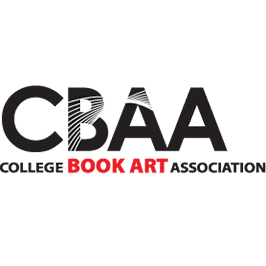For the next two blog posts, I’d like to explore how, in the book arts world, we develop definitions of what is and what is not considered an artist book. This first post sets up an experiment (we are talking pseudo-science here) I conducted in my Spring 2020 Introduction to Book Arts class (ART 214), which is part of the Book and Publication Arts Program at Black Rock Press. During this experiment, I presented students with a selection of four artist books on the first day of class (and for many of the students, for the first time ever). I ask the students to record their observations of the objects in detail, share those findings to the class in the form of an informal discussion, and then return to their groups to articulate a “definition” of what an artist book is. The four books in question, Selected Durations, Flashpoint, vvvvv, and Rain/fall, are all described as artist books by the artists and publishers, but each of these has a very different approach to the form.
Students were given ample time to investigate their assigned objects and record their observations according to the following prompts: Describe what the object looks like sitting on the table: colors, materials, structure, etc. Describe what the object feels like in your hands. Describe the object’s content—what is its subject? Describe the way the object moves (or doesn’t) & is moved by the reader/viewer. What is the relationship between the object’s subject matter & the concept? Why does this book object exist? I gathered the notes from each group of students and laid it out as a table [1] in order to better digest the text.

I am sure that many book arts classes start in this way, and so I am not claiming ingenuity for the approach, but I want to use this information as a way to accomplish a couple of things. First of all, I am genuinely curious to hear my students’ observations and eventual definitions of the book objects because this exercise helps me establish the language that I use to talk about book arts, especially in the beginning of the semester. In ART 214, I often teach non-art majors, the majority of which are freshman or sophomores, and so a good number of my students haven’t even taken a college art class yet. So, the definitions they create become the launch pad for the essays we read, the research they conduct, and the artist books they make. Also, they often have fresh ways of describing these objects from a (mostly) non-art perspective. I find merit in the descriptions of the forms that blossom out of the democratic multiple. I am fascinated by the balance between what is accessible and not accessible to both the trained and the untrained eye (à la making art in academia).
The second post in this set will start from the definitions established by my Intro students and work into a larger consideration of the difficulties in creating a definition of artist books, as documented by Ellen Brown, Dick Higgins, and Ulises S. Carrión, Amaranth Borsuk.
[**I should disclose that I am connected to each of these publications as either the artist, or through print and binding production, but I was careful not to lead the students in any direction beyond answering the occasional question about process.]
AB Gorham is a book artist and writer from Montana. She is the Director at Black Rock Press where she teaches book arts in the Book and Publication Arts Program. Her artist books have been exhibited and collected nationally.

